1. Fake Plants Covered in Dust
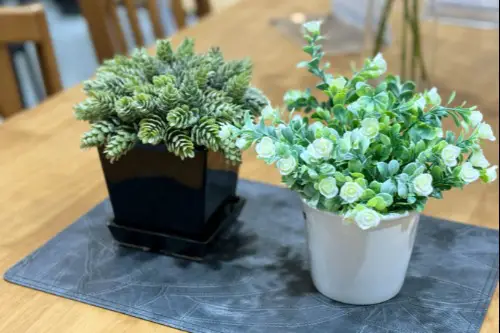
Artificial greenery can look chic when well-maintained, but dusty fake plants do the opposite. Instead of bringing life into a space, they broadcast neglect. Guests notice when leaves have a dull, powdery film on them. It’s a small detail, but it can make the whole room seem unkempt.
Unlike real plants, which naturally refresh a space, faux ones rely entirely on upkeep. If they’re not regularly cleaned, they lose their decorative appeal. People often choose fake plants to avoid responsibility, but ironically they still require work. When that’s skipped, it comes across as lazy rather than stylish.
2. Plastic Couch Covers
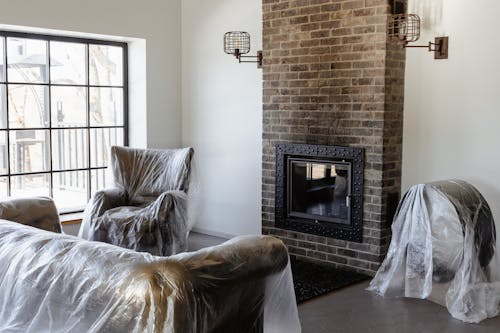
Plastic slipcovers might have made sense in the 1960s when people wanted to protect their furniture from wear, but today they give off a museum-like vibe. They can make a living room feel more like a waiting room than a place to relax. Guests often feel uncomfortable sitting on them because they squeak and stick to the skin. Even if they preserve upholstery, they make the space feel uninviting.
There’s also a perception that plastic covers signal valuing objects over people’s comfort. While practical in households with kids or pets, they clash with modern ideas of cozy living. Guests who want to lounge will be hesitant to lean back or sprawl out. That stiffness quickly translates into the feeling of a formal, off-limits room.
3. Oversized Recliner Chairs
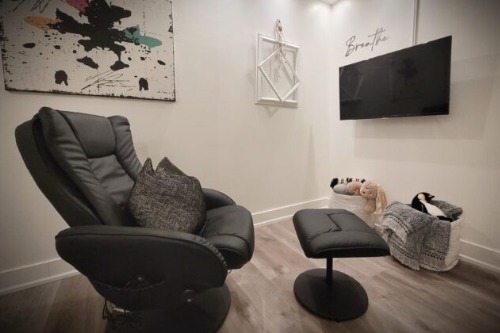
A massive recliner can dominate a living room, pulling focus away from everything else. Guests might see it as more of a personal throne than shared seating. The bulky silhouette can overwhelm smaller spaces, making them look cramped. While they’re comfortable, they often clash with more modern furniture styles.
Functionality doesn’t always mean good design, and that’s where recliners often fall short. Guests might think it looks more like a man cave addition than a versatile piece of décor. The contrast is especially stark if the rest of the furniture is sleek or minimalist. People often quietly register this mismatch as tacky.
4. Plastic-Wrapped Lampshades
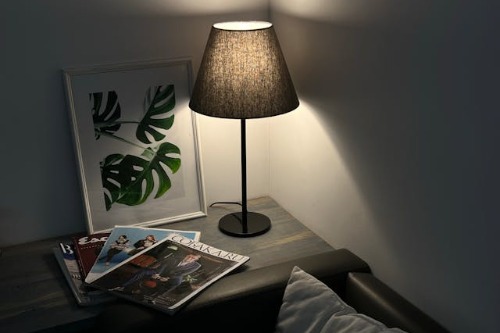
Leaving the protective plastic on lampshades is surprisingly common, but it rarely goes unnoticed. Guests usually assume the homeowner forgot to unwrap them, or worse, is deliberately keeping them on. The plastic dulls the light quality, making the room look harsher. Instead of polished, it reads as careless.
Some people believe it will preserve the shade’s fabric, but it just signals procrastination. Over time, the plastic can yellow and look even worse. Guests will quietly wonder why something brand-new looks cheap. The living room loses warmth, which is the opposite of what lighting should do.
5. Inspirational Word Art Everywhere

A framed “Live, Laugh, Love” might have charm once, but when it’s repeated or overdone, it feels cliché. Guests may see it as impersonal, almost like stock decoration. Instead of adding personality, it suggests copying a mass-market trend. The effect can be a bit too on-the-nose.
It’s not that words themselves are bad, but when they’re generic, they stop sparking interest. Guests want to see décor that feels unique to you, not the same slogans they’ve seen in a dozen other homes. Overuse makes the room feel staged rather than lived in. That undermines the authenticity of the space.
6. Outdated Entertainment Centers
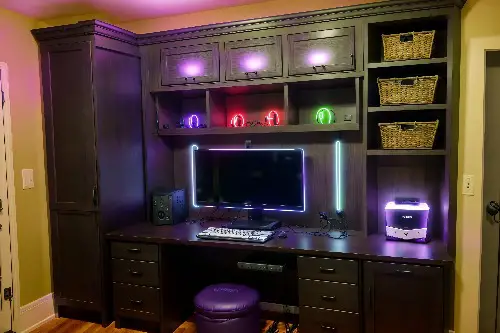
Large, boxy entertainment centers once housed bulky TVs and DVD collections, but now they can feel stuck in time. Guests may notice how much floor space they eat up compared to today’s sleeker stands or wall mounts. A room instantly feels heavier with one looming over everything. Instead of stylish, it leans toward clunky.
Technology has shifted, and living rooms often evolve to match. Oversized cabinets with empty shelves or old media slots call attention to that gap. Guests might quietly think the furniture looks like a relic from the early 2000s. It creates an impression that the room hasn’t been refreshed in years.
7. Faux Animal Rugs

Whether it’s a fake bear skin or zebra print rug, these can feel more costume than design. Guests often interpret them as trying too hard to look exotic. The synthetic sheen rarely convinces anyone it’s natural. Instead, it tends to come off as kitschy.
Even when animal prints are trendy in fashion, they’re much harder to pull off in home décor. A living room risks veering into novelty territory instead of sophistication. Guests who don’t share the same taste may see it as loud or gaudy. That split makes it a risky accessory to showcase.
8. Beaded Door Curtains
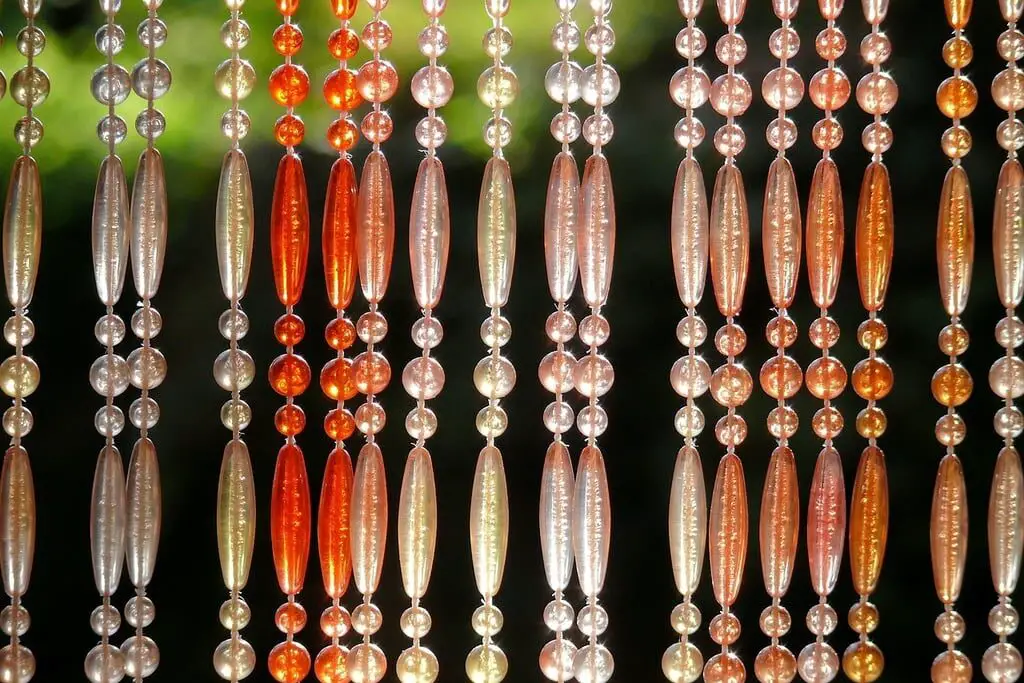
Beaded curtains belong more to dorm rooms or retro throwbacks than modern living rooms. Guests may find them noisy and inconvenient, especially if they separate spaces that need easy flow. Instead of a design statement, they can feel like a gimmick. The constant clattering is often more irritating than charming.
Historically popular in the 1960s and 70s, they rarely translate well into today’s interiors. Guests may associate them with outdated trends or novelty shops. While they add texture, they also disrupt the calm, cohesive look most living rooms aim for. The result can come across as juvenile.
9. Too Many Throw Pillows
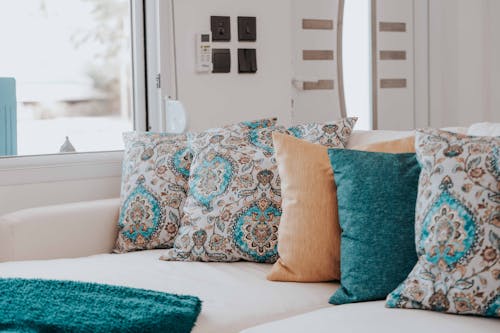
Throw pillows can add comfort, but when they overwhelm a sofa, they become impractical. Guests who have to move several just to sit down may quietly roll their eyes. Instead of cozy, it starts to feel cluttered. The couch becomes more like a pillow display than usable seating.
A handful of well-chosen cushions elevates a room, but excess sends the wrong message. It can signal indecision, like someone tried to cover every design choice with fabric. Guests may also perceive it as valuing looks over function. That subtle discomfort makes the space feel less welcoming.
10. Lava Lamps
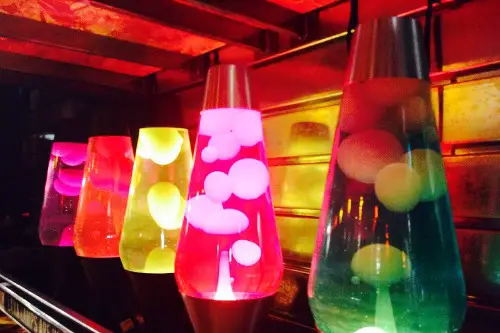
Lava lamps might work in a retro-themed room, but most living rooms aren’t designed that way. Guests can see them as playful but juvenile. They don’t give off much light, and the slow blobs can be more distracting than soothing. Unless intentionally styled, they tend to stick out awkwardly.
Originally popular in the 1960s and resurging in dorm rooms, they rarely align with adult living spaces. Guests may assume it’s a leftover from college days. Instead of chic, it reads as nostalgic clutter. A single offbeat piece can add quirk, but lava lamps rarely succeed in that role.
11. Overly Fragrant Potpourri

Potpourri can freshen up a room, but when it’s overly strong, guests may find it overwhelming. The dried flowers and oils sometimes create an artificial smell that lingers too long. Guests with sensitivities might even feel uncomfortable staying. The visual effect often doesn’t make up for the sensory overload.
What starts as a decorative bowl often ends up dusty and forgotten. Over time, it loses both scent and appeal, becoming little more than a stale accessory. Guests may notice that contradiction right away. Instead of enhancing the living room, it reminds them of a waiting area in a dentist’s office.
12. Themed Figurine Collections

Entire shelves of snow globes, angel figurines, or ceramic cats can overwhelm a living room. Guests might see them as more clutter than charm. While collections can reflect personality, too much feels like a display cabinet rather than a welcoming space. The focus shifts from conversation to “look at all these trinkets.”
Smaller accents can work, but when every surface is covered, it feels obsessive. Guests often hesitate to touch anything, worried they might break a piece. It also dates the room if the figurines tie back to decades-old trends. The impression becomes more kitschy than curated.
13. Plastic Fruit Bowls

Fake fruit bowls were once considered a stylish centerpiece, but today they rarely fool anyone. Guests instantly recognize the glossy, too-perfect appearance. Instead of freshness, they suggest artificiality. A living room feels less authentic with such props on display.
Real fruit adds scent and life, while plastic ones just gather dust. Guests may wonder why someone chose décor that’s so obviously fake. It doesn’t take much to swap in a bowl of seasonal produce. That small upgrade makes a huge difference in how the space is perceived.
14. Overly Matched Furniture Sets
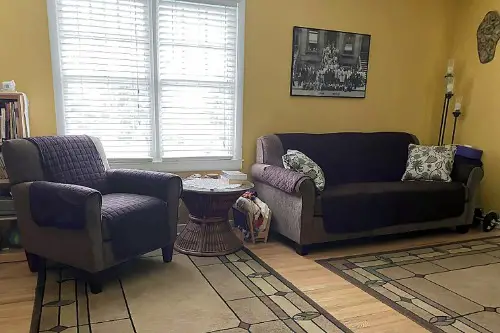
When every chair, couch, and table is identical, a room can feel staged rather than lived in. Guests may see it as lacking creativity. Perfectly matched sets are convenient, but they often strip away personality. Instead of eclectic charm, the result is showroom stiffness.
Design trends now lean toward mixing textures and styles for depth. A rigidly coordinated set can read as dated. Guests often feel more comfortable in a space that looks layered and natural. That’s why matchy-matchy décor is often quietly judged.
15. Neon Signs

Neon signs may add character to a bar, but in a living room, they’re often jarring. Guests may associate them with college apartments rather than mature spaces. The harsh glow competes with warm lighting, making the room less inviting. Even if it’s nostalgic, it feels out of place.
Unless the living room doubles as an entertainment den, neon signs clash with most interiors. They dominate attention rather than complement the space. Guests might appreciate the humor but still think it looks tacky. The vibe shifts from cozy home to dive bar.
This post 15 Living Room Accessories That Guests Secretly Consider Tacky was first published on Greenhouse Black.
